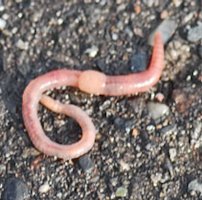
|
Some Common Myths Thought to be True - Myth 48
Myth 48: Earthworms Cut in Half Become Two Earthworms
It is a common misconception that an earthworm becomes two worms when cut in
half. However, only a limited number of earthworm species. are capable of
anterior regeneration. When such earthworms are bisected, only the front half
of the worm (where the mouth is located) can feed and survive, while the other
half dies. Species of the planaria family of flatworms actually do become two
new planaria when bisected or split down the middle.
|
| An Earthworm | |
|
An earthworm is a tube-shaped, segmented animal commonly found living in soil,
that feeds on live and dead organic matter. Its digestive system runs through
the length of its body. It conducts respiration through its skin. An earthworm
has a double transport system composed of coelomic fluid that moves within the
fluid-filled coelom and a simple, closed blood circulatory system. It has a
central and a peripheral nervous system.
|
|
| ⇦ Back to Myth 47 Return to Myth Choices Page 4 On to Myth 49 ⇨ | |